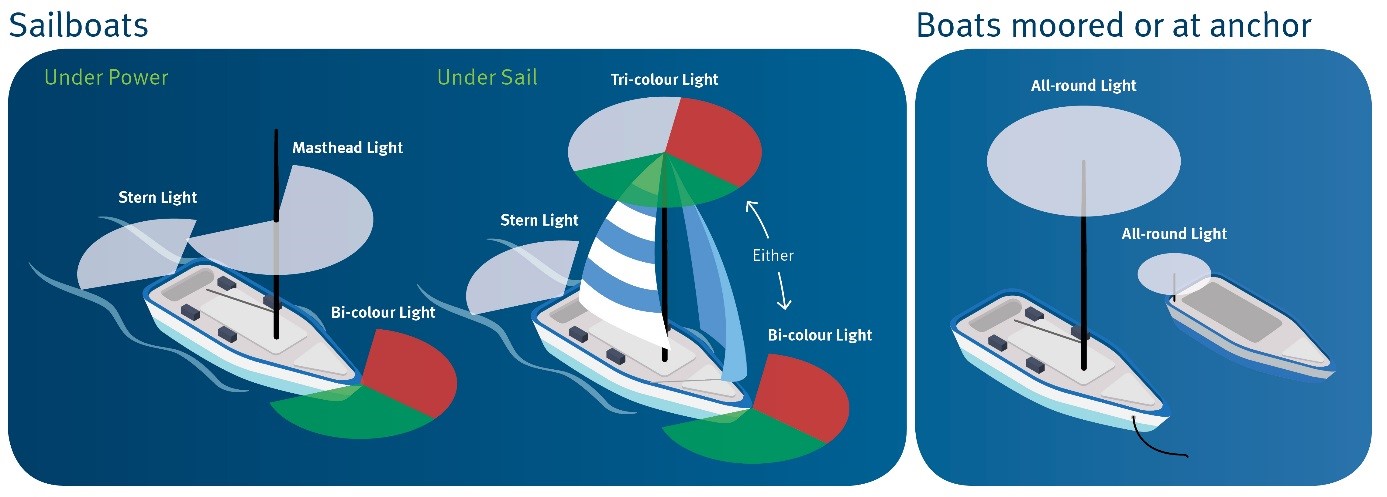Navigation lights
Navigation lights must be shown on boats operating:
- between sunset and sunrise
- in restricted visibility.
Navigation lights indicate:
- the size of the boat
- the angle where you see them
- the direction the boat is travelling
- if the boat is underway or anchored.
Navigation lights should be fitted by the manufacturer or an authorised person. Smaller boats have a number of options including bracketed or combination suction-capped lights. These types of navigation lights are available from marine dealers.
Minimum required lights
Sailboats underway
- Sailboats less than 7m and vessels under oars must have a torch or lantern showing a white light ready to display in time to prevent a collision.
- Sailboats less than 20m in length may combine sidelights and stern lights in a single lantern carried at the top of the mast.
- Sailboats 7m or more in length must show sidelights and stern lights. In addition to sidelights they may show 2 all-round lights in a vertical line (red over green) that may be shown at the top of the mast, but not when a combined lantern is used.
Powered boats underway
- Powered boats less than 7m in length and whose maximum speed does not exceed 7 knots, may show an all-round white light instead of sidelights. If practical, these boats should also show sidelights.
- Powered boats must show sidelights and either an all-round white light or a stern and masthead light. Sailboats under engine power are considered to be powered boats, and must show the same lights as a powered boat. Personal watercraft are also powered boats.
Personal watercraft
- All personal watercraft (PWC) operating at night or in restricted visibility must show navigation lights.
- Navigation lights must be installed in accordance with the manufacturer's instructions. A mast for an all-round white light on a PWC should be installed in such a way it will not pose an impaling hazard.
- The addition of any aftermarket products to a PWC must be in accordance with the manufacturer's instructions and must not compromise the watertight integrity of the hull.

Boats moored or at anchor
All boats at anchor or attached to a registered buoy mooring must show an all-round white light.
Sport rowing boats
Boats engaged in rowing activities (training or competition) on the Brisbane River now need to display an all-round white flashing light if they are on the water before sunrise or after sunset.
Commercial ship recognition
Daymarks and navigation lights show the activities of larger ships and many commercial and fishing ships. The following examples describe common day shapes and navigation lights. Standard navigation lights (for example port, starboard and anchor) must be shown as well as the lights used to signal particular activities.
| Activity | Daymark | Lights |
|---|---|---|
|
Ships at anchor |
|
|
|
Ships restricted in their ability to manoeuvre |
|
Ships restricted in their ability to manoeuvre should show lights red over white over red. |
|
Ships engaged in underwater operations or dredging |
Ships engaged in diving operations should also display a rigid code flag 'A' in an area easily visible to others. |
|
|
Ships aground |
|
|
|
Ships not under command |
|
|
|
Pilot vessel on duty |
|
|
|
Commercial ships engaged in fishing |
|
Commercial ships fishing (other than trawling) should show lights red over white when fishing at night. |




